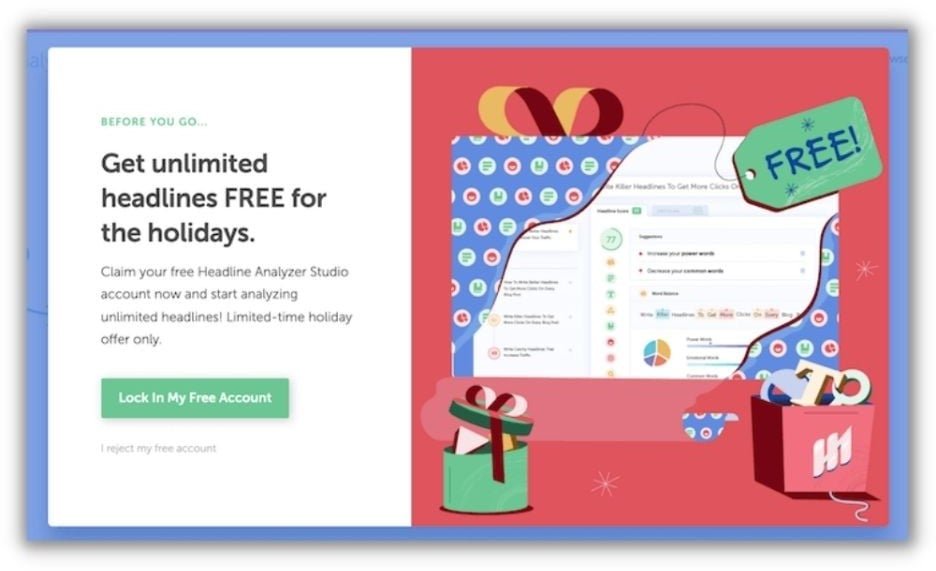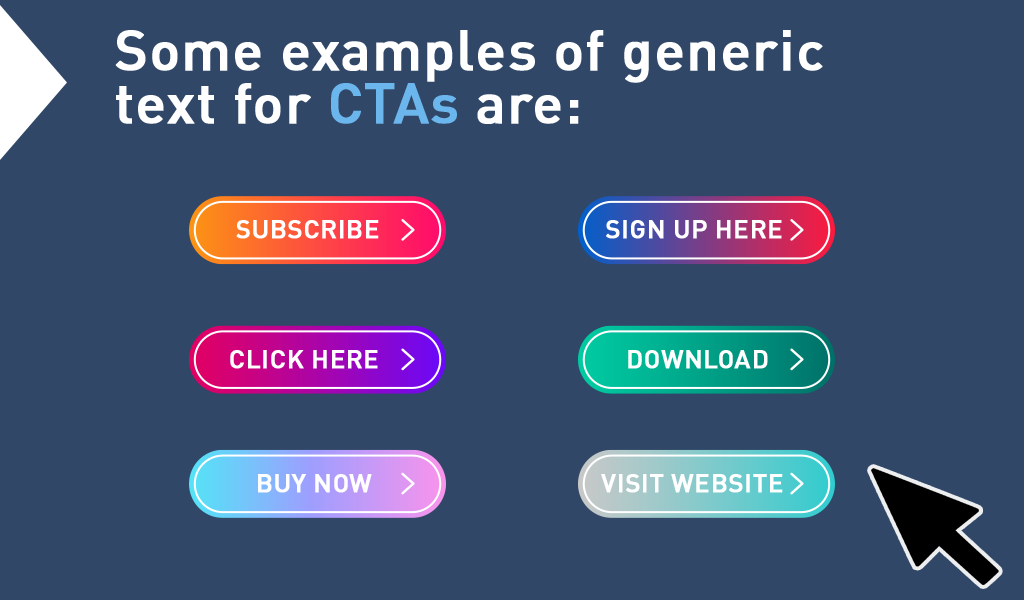Crafting Strong CTAs for Email Campaigns: Boost Engagement
In the vast realm of email marketing, one aspect that can significantly enhance effectiveness is crafting strong CTAs for email campaigns. A well-designed Call-to-Action (CTA) serves as a pivotal element that drives user engagement and conversions. This blog post delves deep into the intricacies of creating compelling CTAs that resonate with your audience and encourage them to take action.
The Importance of CTAs in Email Marketing
Creating an effective email marketing campaign encompasses numerous elements, but none hold as much weight as the call-to-action. The CTA is not just a button; it’s the bridge between content consumption and user action. It directs recipients toward the next steps you want them to take, whether that’s making a purchase, signing up for a webinar, or downloading a resource. Understanding the significance of CTAs is crucial for any marketer aiming to optimize their email strategy.
Driving User Engagement with Strong CTAs

User engagement is the lifeblood of any email campaign. A well-crafted CTA can dramatically increase open rates, click-through rates, and the overall success of your outreach efforts.
When users receive an email, their attention is often fleeting. They need something to grab their interest and compel them to act immediately. A powerful CTA can do just that. Crafting strong CTAs involves more than mere wording; it requires understanding your audience’s needs, preferences, and behaviors. Leveraging insights about your target demographic can help tailor your CTAs to be more relevant and engaging.
For example, if you’re sending out a newsletter targeting young professionals, using contemporary language and design elements that reflect their lifestyle will resonate more effectively than traditional corporate terminology. By aligning your CTAs with the values and interests of your audience, you create a sense of connection that increases the likelihood they will engage with your content.
Enhancing Conversion Rates through Effective Call-to-Actions

The ultimate goal of any email marketing campaign is conversion. Whether that means generating leads, increasing sales, or boosting web traffic, effective CTAs are essential in achieving these objectives.
A strong CTA acts as the final nudge that encourages users to follow through with desired actions. It provides clarity and direction, eliminating any ambiguity around what the recipient should do next. Research has shown that emails with clear and compelling CTAs can lead to substantial increases in conversion rates.
Consider employing various tactics to enhance the effectiveness of your CTAs, such as emphasizing urgency or exclusivity. For instance, phrases like “Limited Time Offer” or “Join Now to Secure Your Spot” can instill a sense of urgency, encouraging recipients to act promptly rather than procrastinate.
Psychological Triggers Behind Successful CTAs

Understanding the psychological triggers behind human behavior can greatly inform your approach to crafting strong CTAs for email campaigns. Humans are inherently driven by emotional responses, and tapping into these emotions can make your CTAs more impactful.
One vital trigger is scarcity. When people perceive something as limited in availability, they feel a stronger desire to act. Phrases like “Only a Few Left” or “Sale Ends Soon” create a fear of missing out (FOMO), pushing users to click without delay.
Another psychological element is social proof. Incorporating testimonials or data indicating that others have found value in your offering can reassure recipients that they are making a wise choice. Including phrases like “Join Thousands of Satisfied Customers” can leverage this principle effectively.
Moreover, using personal language can foster a sense of connection. When you use “you” and “your,” it feels as though you are speaking directly to the reader, which can encourage them to feel more personally invested in the action you are promoting.
Essential Elements of a Strong CTA

To cultivate effective CTAs, it’s imperative to focus on three fundamental elements: clarity, urgency, and visibility. Each of these components plays a unique role and contributes to the overall effectiveness of your call-to-action.
Clarity: Direct and Actionable Language
When it comes to CTAs, clarity is king. Users should instantly understand what action you want them to take upon reading your CTA. Avoid jargon or convoluted phrasing that may confuse your audience. Instead, employ direct and actionable language that leaves no room for misinterpretation.
Consider the difference between “Click Here” and “Download Your Free E-book.” The latter provides clear guidance on what the user can expect when they comply with the CTA.
In addition to direct language, it’s essential to ensure that your CTA aligns with the content leading up to it. There should be a logical flow that guides users toward the action you desire. For example, if your email discusses the benefits of a particular product, your CTA should closely relate to that product – such as “Shop Now” or “View Product Details.”
Urgency: Instilling a Sense of Immediate Action
Creating a sense of urgency can be a game-changer when it comes to encouraging prompt action from your audience. People tend to respond better to situations that require immediate attention, often due to a fear of missing out.
To evoke urgency, consider incorporating time-sensitive language into your CTAs. Phrases like “Act Fast” or “Limited Availability” can encourage swift decision-making. Make sure to back up your claims with tangible timelines, such as “Offer Expires in 48 Hours,” to make it more credible.
However, be cautious not to overuse urgency tactics. If every email contains exaggerated claims of urgency, your audience may become desensitized and less likely to respond. Reserve these strategies for truly valuable opportunities that warrant immediate action.

Value Proposition: Clearly Communicating Benefits
Users are more inclined to engage with a CTA when they can see the benefits that come with taking action. Your value proposition should clearly communicate what users stand to gain by clicking the CTA.
Whether it’s a discount, access to exclusive content, or solutions to their problems, emphasize how the action you’re promoting adds real value to their lives. Instead of merely stating “Subscribe to Our Newsletter,” consider reframing it to “Subscribe to Receive Exclusive Tips Discounts.” This showcases the benefit directly and positions the action as advantageous for the recipient.
Utilizing visuals alongside your value proposition can bolster its effectiveness. Consider including imagery that represents the gain they will receive – be it smiling faces, happy customers, or enticing product displays – to strengthen the appeal of your CTAs.
Visibility: Ensuring Your CTA Stands Out
Even the most compelling CTA becomes ineffective if it isn’t easily visible. Ensuring your CTA stands out amidst the rest of your email content is critical for capturing attention and prompting clicks.
Color choice plays a significant role in visibility. Use contrasting colors for your buttons or links to draw the eye, ensuring they pop against the backdrop of your email design. Similarly, the size and placement of your CTA can impact its visibility. Place primary CTAs above the fold or within sections where user engagement is likely, ensuring they catch attention early on.
In addition to design elements, whitespace can also enhance visibility. Surrounding your CTA with ample whitespace helps eliminate distractions and focuses attention on the action you want users to take.
Exploring Different Types of CTAs

In email marketing, a one-size-fits-all approach does not apply when it comes to CTAs. Various types of CTAs can serve different purposes, and understanding these distinctions can empower marketers to optimize their campaigns effectively.
Button vs. Text Links: Which Drives More Engagement?
When designing CTAs, you have the option of utilizing either buttons or text links. Both serve the same purpose but can elicit different responses based on user preferences and context.
Buttons are often visually striking and easy to identify, making them a popular choice for primary CTAs. They draw the user’s eyes and can convey urgency through color and design. Additionally, buttons can enhance click-through rates due to their prominence, allowing users to easily take the desired action.
Text links, however, have their own merits. They can be seamlessly integrated into the narrative, providing a more natural flow. In some cases, users may find text links less intimidating than large buttons, especially if they are wary of being bombarded with marketing messages. Ultimately, testing both formats in your campaigns will provide insights into which style resonates better with your audience.
Primary vs. Secondary CTAs: Balancing Multiple Options
An effective email strategy often involves multiple CTAs. However, distinguishing between primary and secondary CTAs is vital to prevent overwhelming your audience.
Your primary CTA should spotlight your main objective, while secondary CTAs can provide additional options for engagement. For instance, if your primary goal is to drive sales, the primary CTA might read “Shop Now,” while a secondary option could invite users to “Learn More” about a specific product.
It’s essential to maintain a hierarchy in your CTAs and avoid cluttering your email with too many options. Ensure your primary CTA is unambiguous and dominates the visual space, while secondary options remain accessible yet subtle. Striking the right balance can create a seamless user experience that fosters engagement.
Contextual CTAs: Tailoring to Audience Segments
Understanding your audience segments enables you to craft contextual CTAs that resonate with specific groups. Tailoring your messaging to align with the interests and pain points of different demographics enhances relevance and effectiveness.
For example, if you’re targeting new customers through one segment, your CTA might focus on introductory offers or educational resources. In contrast, for returning customers, your CTA could promote loyalty programs or exclusive deals.
Utilizing segmentation tools and analytics can help identify patterns within your audience, allowing you to create highly targeted CTAs that speak directly to their needs. This level of personalization boosts engagement and can lead to higher conversion rates as users feel understood and valued.
Best Practices for Creating Effective CTAs

Now that we’ve explored the essential elements and types of CTAs, let’s dive into best practices that can elevate your email campaign performance. By following these guidelines, marketers can ensure that their CTAs are optimized for success.
A/B Testing for Optimal CTA Variations
One of the most effective ways to improve your CTAs is through A/B testing. This method allows you to compare different versions of your CTAs to determine which performs better in terms of engagement and conversions.
You can test various aspects of your CTAs, including wording, color, placement, and formatting. By analyzing the results, you’ll uncover valuable insights that guide future campaigns – enabling you to refine your approach based on data-driven decisions.
Regularly conducting A/B tests keeps your content fresh and ensures you’re staying attuned to evolving audience preferences. Continuous experimentation will ultimately contribute to the ongoing enhancement of your email marketing strategy.
Choosing Action-Oriented Language
The language used in your CTAs is paramount in eliciting action from your audience. Opting for action-oriented language sets the tone and encourages users to take the necessary steps to achieve their goals.
Strong verbs such as “Get,” “Claim,” “Discover,” or “Start” carry a sense of urgency and enthusiasm. Pairing these action words with compelling phrases exuding value can further enhance the effectiveness of your CTAs.
For example, instead of saying “Learn About Our Services,” rephrase it to “Discover How Our Services Can Transform Your Business.” This not only conveys action but also establishes a strong connection with the reader’s aspirations.

Placement Techniques: Where to Place CTAs
Strategic placement of CTAs is critical to capturing attention and driving engagement. The ideal location will depend on your specific email layout, content, and audience behavior.
Placing your primary CTA towards the beginning of the email captures immediate interest. However, don’t underestimate the power of including CTAs at the end or in the middle of your content. This positioning can serve as a reminder after users have consumed valuable information, reinforcing the action you wish them to take.
Additionally, consider using multiple CTAs throughout longer emails. Just ensure that your primary CTA remains prominent and distinguishable. Proper spacing and design choices will help maintain a seamless flow while providing ample opportunities for engagement.
Analyzing and Optimizing CTA Performance

Once you’ve implemented your CTAs, it’s important to monitor their performance continuously. Analyzing data provides insights that can inform adjustments, helping to improve your email marketing strategy over time.
Metrics for Measuring CTA Effectiveness
Understanding the metrics associated with your CTAs is crucial for evaluating their effectiveness. Key performance indicators (KPIs) related to CTAs include click-through rates (CTR), conversion rates, and engagement levels.
Tracking CTR reveals how many users clicked on your CTA relative to the total number of email recipients. High CTR indicates that your CTA resonates well with your audience. Conversely, low CTR signals a need for adjustment.
Conversion rates measure the percentage of users who completed the desired action after clicking the CTA. This metric reflects the efficiency of the entire marketing funnel – from initial engagement to final conversion.
By regularly assessing these metrics, marketers can glean valuable insights that contribute to refining their approaches and optimizing CTAs.
Using Tools for Data-Driven Insights
Various digital marketing tools can assist in tracking and analyzing CTA performance. Platforms such as Google Analytics, email marketing software, and customer relationship management (CRM) systems provide comprehensive insights into user behavior and engagement.
These tools enable you to view data relating to user interactions with CTAs, including detailed reports on clicks, conversions, and user demographics. By leveraging these insights, marketers can make informed decisions regarding future campaigns, ensuring they continually evolve to meet audience expectations.
GoHighLevel is a comprehensive platform that streamlines the creation and optimization of CTAs for email campaigns. It provides powerful automation tools, analytics, and customizable templates, enabling marketers to craft compelling calls-to-action that drive engagement and conversions. By integrating seamlessly with various marketing channels, GoHighLevel helps businesses analyze performance and continuously improve their CTAs for maximum impact.
Continuous Improvement: Iterating Based on Results
The digital landscape is ever-changing, and continuous improvement is essential for sustained success. As you gather insights from your CTA analysis, be prepared to iterate and adapt your strategies accordingly.
Experiment with different messaging, designs, and placements based on performance data. What worked yesterday may not yield the same results tomorrow, so staying ahead of the curve is paramount. Engaging with your audience through surveys and feedback can also inform your iterations, allowing for genuine audience input that shapes future CTAs.
Conclusion
In conclusion, strong CTAs are essential for driving engagement and increasing conversions in email marketing campaigns. Focusing on key elements such as clarity, urgency, and visibility allows you to create compelling CTAs that resonate with your audience. By continuously analyzing performance and iterating on your strategies based on data-driven insights, you can master the art of crafting strong CTAs for email campaigns and significantly enhance their effectiveness. Remember, your success lies in understanding your audience and tailoring your approach to meet their needs.




